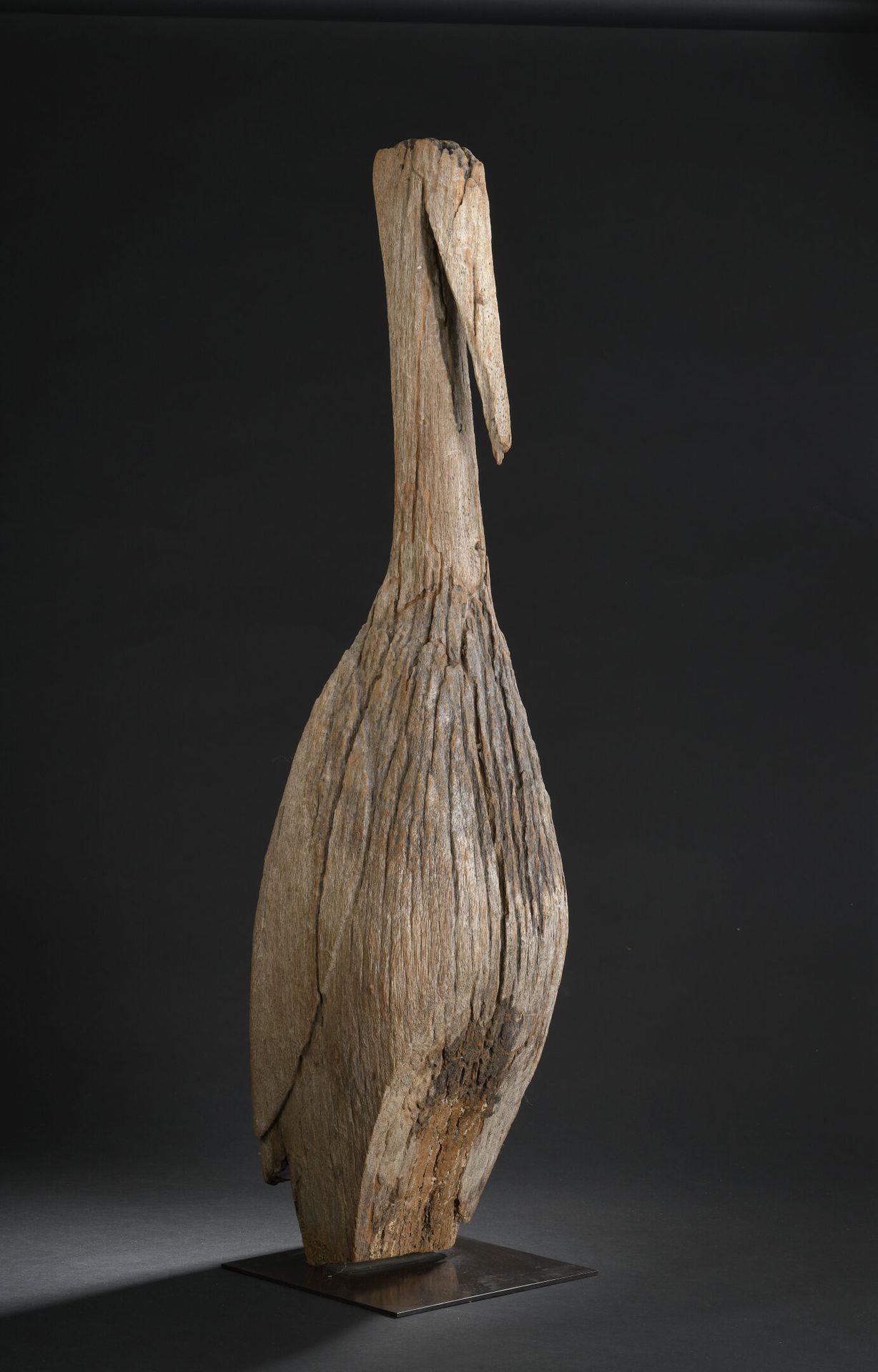Description
Sakalava bird, Madagascar Wood H. 85 cm Provenance : Paul and Jacqueline Canfère collection acquired from Jean-Michel Huguenin (according to oral information from descendants). Living along the west coast of Madagascar, the Sakalava bury their dead far from the villages, in the forest. Tomb markers, representations of human effigies but also of large birds -symbol of the soul- such as this example are sculpted to decorate the corners and sides of the graves. Inscribed in a wood eroded by the wind of the Indian Ocean, the rain, the sun, this bird has a swollen crop, signified by a sober and beautiful rounding, topped by a long neck, the head by metonymy is formed by a long beak plunging forward, towards the ground, towards the earth where the deceased lies. For a similar bird, without the base, former Pierre Langlois collection (1966) presented by Bernard De Grunne in his book Sakalava (2018, p. 52).
104
Sakalava bird, Madagascar Wood H. 85 cm Provenance : Paul and Jacqueline Canfère collection acquired from Jean-Michel Huguenin (according to oral information from descendants). Living along the west coast of Madagascar, the Sakalava bury their dead far from the villages, in the forest. Tomb markers, representations of human effigies but also of large birds -symbol of the soul- such as this example are sculpted to decorate the corners and sides of the graves. Inscribed in a wood eroded by the wind of the Indian Ocean, the rain, the sun, this bird has a swollen crop, signified by a sober and beautiful rounding, topped by a long neck, the head by metonymy is formed by a long beak plunging forward, towards the ground, towards the earth where the deceased lies. For a similar bird, without the base, former Pierre Langlois collection (1966) presented by Bernard De Grunne in his book Sakalava (2018, p. 52).
You may also like
